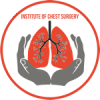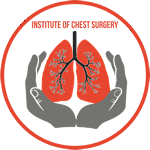Bronchiectasis is a chronic respiratory condition characterized by the widening and scarring of the airways in the lungs. This leads to a buildup of mucus, which can result in recurrent infections, persistent coughing, and breathing difficulties. The treatment of bronchiectasis aims to manage symptoms, prevent complications, and improve the overall quality of life for affected individuals. In this comprehensive blog post, we will explore the various treatment options available for bronchiectasis, from medical interventions to lifestyle changes, all geared towards helping patients breathe easier and lead healthier lives.
Understanding Bronchiectasis and Its Causes
Before we delve into the treatment options, it’s essential to understand what bronchiectasis is and what causes it.
1. Bronchiectasis Overview
Bronchiectasis occurs when the airways in the lungs, called bronchi, become damaged and lose their elasticity due to chronic inflammation or infection. As a result, the airways become permanently widened and prone to trapping mucus, leading to recurrent infections and airway obstruction.
2. Common Causes of Bronchiectasis
The common causes of bronchiectasis include:
- Infections: Repeated lung infections, particularly in childhood, can contribute to bronchiectasis. Conditions such as pneumonia and whooping cough may damage the airways and initiate the development of bronchiectasis.
- Cystic Fibrosis: This genetic disorder causes thick, sticky mucus to build up in the airways, leading to recurrent infections and bronchiectasis.
- Immune System Disorders: Conditions that weaken the immune system, like primary ciliary dyskinesia, can also contribute to the development of bronchiectasis.
- Airway Obstruction: Any blockage in the airways, such as a tumor or inhaled object, can cause bronchiectasis.
Treatment Options for Bronchiectasis
Bronchiectasis treatment focuses on managing symptoms, preventing complications, and improving lung function. The treatment plan is often tailored to the individual’s specific condition and medical history. Here are the various treatment options for bronchiectasis:
1. Medications
– Antibiotics: Antibiotics are prescribed to treat bacterial infections that frequently occur in individuals with bronchiectasis. Long-term or intermittent antibiotic therapy may be necessary to prevent exacerbations.
– Bronchodilators: These medications help relax and widen the airways, making it easier to breathe. Bronchodilators are particularly beneficial for those with concomitant asthma or chronic obstructive pulmonary disease (COPD).
– Mucus-Thinning Agents (Mucolytics): Mucolytic medications help reduce the thickness of mucus, making it easier to clear from the airways.
– Anti-Inflammatory Drugs: Corticosteroids or other anti-inflammatory drugs may be prescribed to reduce airway inflammation and prevent further damage.
2. Airway Clearance Techniques
– Chest Physiotherapy: Also known as chest PT or chest percussion, this technique involves rhythmic clapping on the chest and back to help loosen and mobilize mucus, making it easier to cough up.
– Positive Expiratory Pressure (PEP) Devices: PEP devices create back pressure during exhalation, helping to open the airways and facilitate mucus clearance.
– High-Frequency Chest Wall Oscillation (HFCWO): This technique uses an inflatable vest that vibrates at high frequencies to dislodge mucus from the airways.
3. Pulmonary Rehabilitation
– Pulmonary rehabilitation programs are designed to improve lung function, exercise capacity, and overall well-being for individuals with chronic lung conditions, including bronchiectasis.
4. Oxygen Therapy
– In cases where bronchiectasis leads to low blood oxygen levels, supplemental oxygen therapy may be prescribed to help maintain adequate oxygen levels in the bloodstream.
5. Surgery
– In severe cases of bronchiectasis with localized damage, surgery may be considered to remove the affected lung segment or area.
6. Preventive Measures
– Individuals with bronchiectasis are encouraged to stay up-to-date with vaccinations, including the flu and pneumococcal vaccines, to reduce the risk of respiratory infections.
7. Lifestyle Changes
– Smoking cessation is crucial for individuals with bronchiectasis, as smoking can exacerbate lung inflammation and damage.
Conclusion
Bronchiectasis is a chronic lung condition that requires a comprehensive treatment plan to manage symptoms and prevent complications. The treatment options for bronchiectasis encompass a range of medical interventions, airway clearance techniques, pulmonary rehabilitation, lifestyle changes, and preventive measures. It is essential for individuals with bronchiectasis to work closely with their healthcare providers to develop a personalized treatment plan that addresses their unique needs and medical history.
By diligently following the prescribed treatment plan, individuals with bronchiectasis can experience improved lung function, reduced exacerbations, and an enhanced quality of life, enabling them to breathe easier and lead healthier lives.







